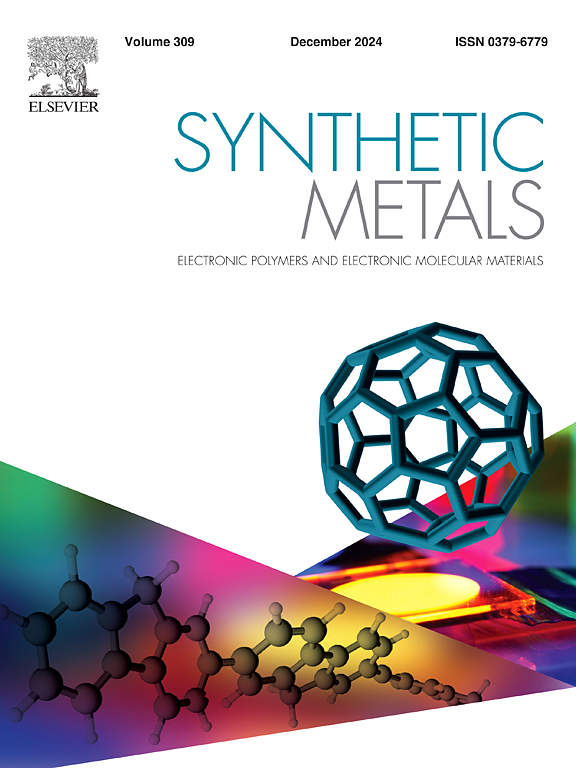基于bodipy的有机太阳能电池供体-受体-供体分子的计算设计:DFT和TD-DFT研究
IF 4.6
3区 材料科学
Q2 MATERIALS SCIENCE, MULTIDISCIPLINARY
引用次数: 0
摘要
开发供体-受体-供体(D-A-D)分子结构对推进有机太阳能电池技术至关重要,因为它们能够提高光伏性能。最近,魏婷及其同事从BODIPY骨架中合成了一种小分子D-A-D结构(BP-R),并证明了其在有机太阳能电池中的有效性。受到这项工作的启发,我们设计了新的基于bodipy的D-A-D结构,并计算评估了新的给电子单元的效果。该结构由中央BODIPY核心组成,该核心连接到环戊二噻吩(CPDT),二噻吩[3,2-b:2 ',3 ' -d]吡咯(DTP)和二噻吩(DTS)的3,5和8位的给电子基团上。我们利用密度泛函理论(DFT)和时变DFT (TD-DFT)分析了这些新结构的光学和电子性质。与BP-R相比,我们设计的分子具有更小的能隙、红移吸收光谱和更高的光收集效率,BP-DTS是最有希望的候选分子。该研究为合理设计先进的bodipy基材料,优化有机太阳能电池的效率和稳定性奠定了基础。本文章由计算机程序翻译,如有差异,请以英文原文为准。
Computational design of BODIPY-based donor-acceptor-donor molecules for enhanced organic solar cells: A DFT and TD-DFT study
Developing donor-acceptor-donor (D-A-D) molecular structures is essential in advancing organic solar cell technology due to their ability to enhance photovoltaic performance. Recently, Ting Wei and colleagues synthesized a small molecular D-A-D structure (BP-R) derived from the BODIPY skeleton and demonstrated its effectiveness in organic solar cells. Inspired by this work, we designed new BODIPY-based D-A-D structures and computationally evaluated the effect of the new electron-donating units. The structures developed in this work consist of the central BODIPY core, which is attached to the electron-donating groups of cyclopentadithiophene (CPDT), dithieno[3,2-b:2′,3′-d]pyrrole (DTP), and dithienosilole (DTS) from positions 3,5 and 8. We analyzed the optical and electronic properties of these new structures using Density Functional Theory (DFT) and Time-Dependent DFT (TD-DFT). Compared with BP-R, our designed molecules showed lower energy gaps, red-shifted absorption spectra, and improved light harvesting efficiency, and BP-DTS emerged as the most promising candidate. This study paves the way for the rational design of advanced BODIPY-based materials to optimize the efficiency and stability of organic solar cells.
求助全文
通过发布文献求助,成功后即可免费获取论文全文。
去求助
来源期刊

Synthetic Metals
工程技术-材料科学:综合
CiteScore
8.30
自引率
4.50%
发文量
189
审稿时长
33 days
期刊介绍:
This journal is an international medium for the rapid publication of original research papers, short communications and subject reviews dealing with research on and applications of electronic polymers and electronic molecular materials including novel carbon architectures. These functional materials have the properties of metals, semiconductors or magnets and are distinguishable from elemental and alloy/binary metals, semiconductors and magnets.
 求助内容:
求助内容: 应助结果提醒方式:
应助结果提醒方式:


